[THE DEBRIEF] BMW S 1000 RR TRACK BIKE UPDATE — WITH DATA
Adding grip, changing gearing, and optimizing suspension
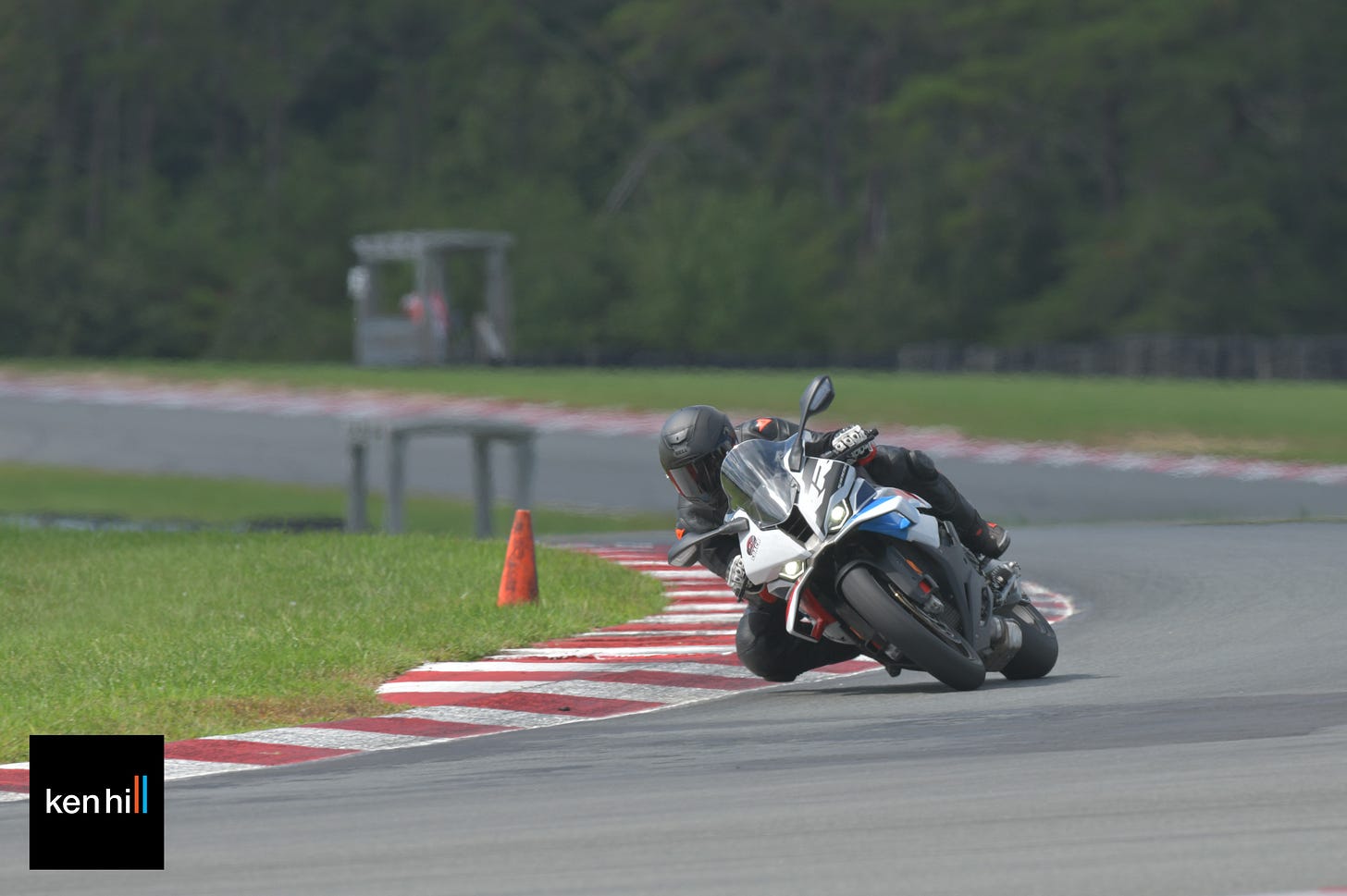
Going fast is easy, right? All you have to do is lever on sticky slicks and you’re ready to rip quicker lap times. I was set to make a tire change on my 2025 BMW S 1000 RR, but then I asked myself, “What really happens when you modify a modern production superbike? Are you ready to grid up and race, or are you potentially taking a step or even two backward?”
As I was preparing for a coaching day at New Jersey Motorsports Park, I decided to make the jump to Dunlop SportMax slicks. Compared to the stock Metzler Racetech RR K3s, the front Dunlop is 6mm taller and the rear is 14mm taller. I consulted my MotoSPEC chassis program and concluded that I would have to change both the chassis geometry and final gearing.
In the interest of systematic changes, I laid out a three-step plan:
Fit slicks with no other changes to see how bike reacts
Change gearing to see if there is actual improvement
Optimize chassis and suspension based on feedback
Fitting Slicks
I’ll admit, I was spoiled by the stock tires. With no warmers and minimal setup work—a touch more rear preload and a bit of front rebound—the stock chassis was a joy to ride. The bike turned like a bicycle, and the way it held its line exiting corners was intoxicating. But I wanted to go faster. Increasing grip adds force, so I wasn’t exactly sure what I would be up against.
Slicks threw all of that goodness out the window. Stock gearing felt even taller. The bike wanted to stand up as I released the brakes, and the front felt like it would tuck as I added drive throttle. And, it turned slower. My lap times improved, but slicks didn’t deliver the expected gains. Before, I had head room to think about going faster. Now, I wasn’t sure how to find more speed.
This highlights how well BMW nailed the stock chassis settings. There is a clear understanding how to balance the grip level of the OEM tires with the forces needed to produce a quick lap time. My next step was to figure out how to get that fun, effortless feeling back, while still hitting my personal lap-time goals.
Changing Gearing
Why start with gearing? There are several reasons. I wanted to keep the stock chain and make a minimal wheelbase change, but I needed a big enough swing to avoid being in first gear multiple times per lap. Dropping the countershaft sprocket from 17 teeth to 16 was the easiest, quickest, and most cost-effective way to accomplish that.
This change also set me up for the next step, optimizing the chassis for the switch to slicks, since adjusting wheelbase and reducing front sprocket size affects both balance and suspension settings. I wanted to sort out gearing first so I wouldn’t be chasing any negative chassis effects later.
So, did the new gearing help? Absolutely. In fact, the change benefited the bike much more than even the speed graphs suggest. I no longer needed first gear, and I had fewer overall shifts per lap. The S 1000 RR accelerated harder, and I could finally use fifth gear effectively on the long front straight instead of holding fourth.
Here is a GPS speed graph highlighting where the gearing really came into play.
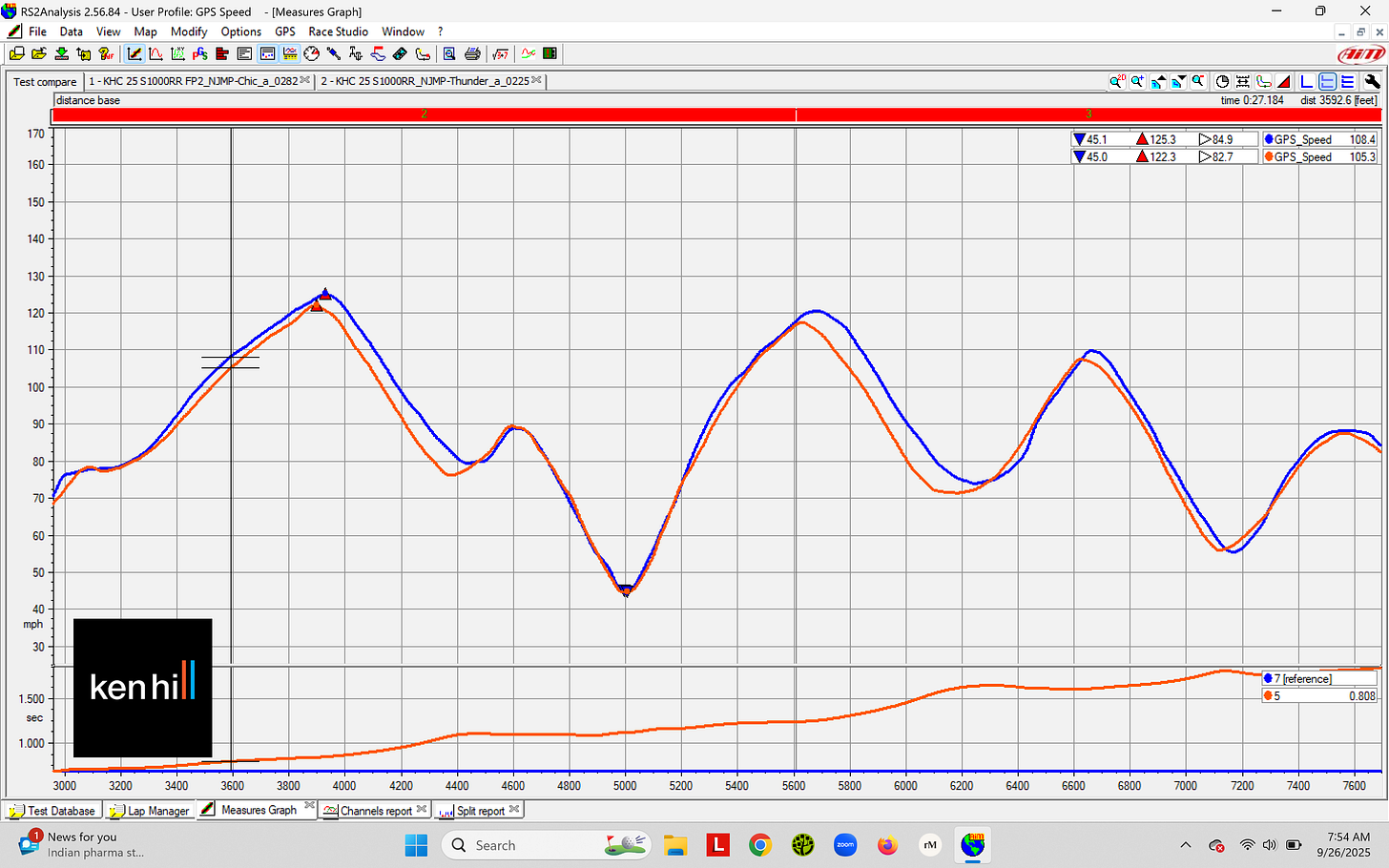
Optimizing Handling
Swapping the Marzocchi fork cartridges and shock for aftermarket replacements right out of the gate would have been easy. I have access to the best in the business, and the right parts with proven baseline settings are only a phone call away. But I wanted to understand the capabilities of the stock suspension, knowing that OEM components are always a compromise.
I could write a novel about every change I made, why I made it, and the result. Rather, I will highlight here a few key areas, then dig into what stood out for me:
Fork and shock preload adjusters have a wide thread pitch
Chassis has a narrow window in which it feels right
Electronics can either work for you or against you
Yes, I found the good feeling that I was initially missing
Where to Start
The first step was to restore the geometry to match OEM specs. In this case, that meant lowering the rear ride height using the OEM adjuster. From there, it was all about dialing in the fork and shock to find the braking and acceleration support needed for the feel I wanted. That, however, wasn’t so easy.
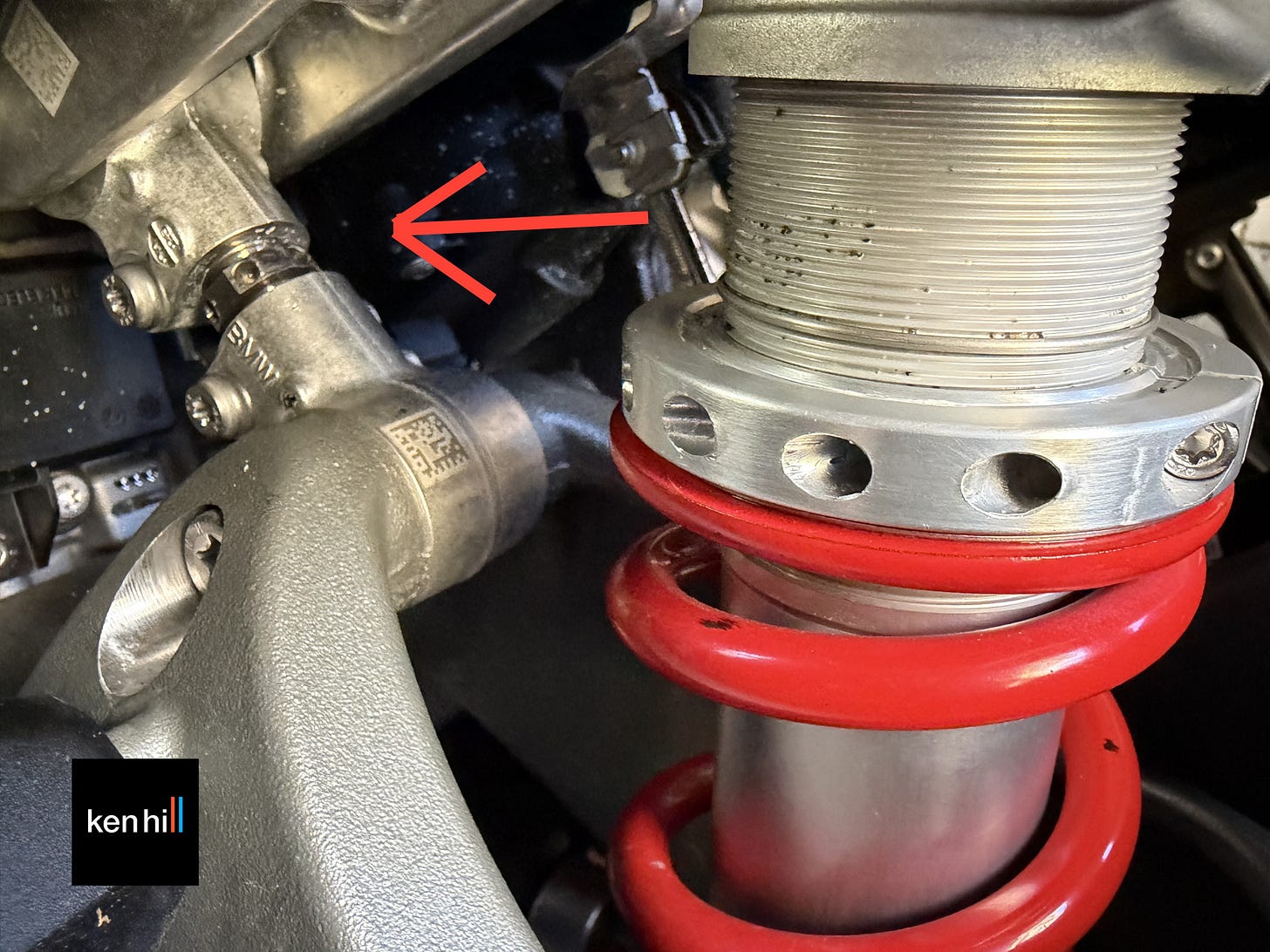
Let’s pause here. This bike might have the most sensitive chassis I’ve encountered. Small adjustments have big effects. This is partly due to the coarse threading on the stock suspension. One turn of the shock collar, for example, is nearer 1.5mm than the standard 1mm. Damping is the same: two clicks of fork compression felt more like a spring change than fine-tuning.
I found myself scratching my head and double-checking my notes. Factor in swingarm pivot height, along with front and rear ride heights, and it’s easy to spin yourself in circles. How do you avoid that? Notes, lots of them, and staying consistent with tires. I ran Dunlop R3 front and R8 rear slicks the entire time, always at the same hot pressures.
In the end, I was in an ongoing loop of adding support to either the front or rear until I had too much or too little, then balancing front and rear feel with geometry changes.
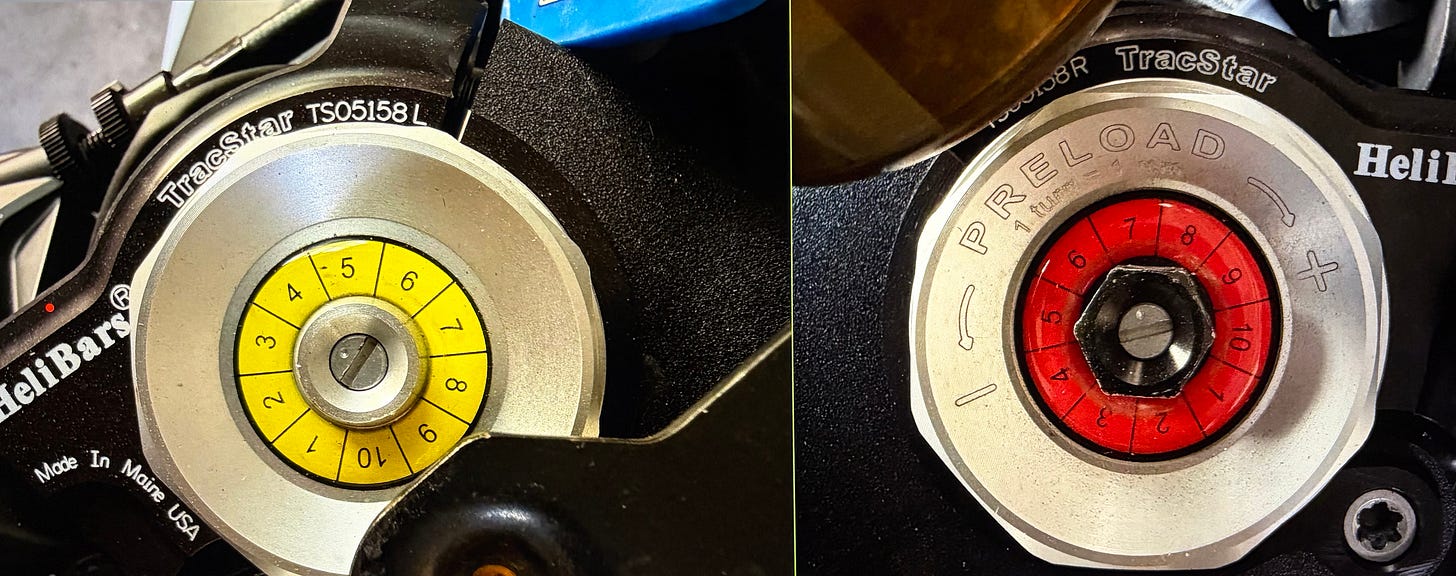
What Stands Out About the BMW Chassis
Neutral stance preferred, slightly biased to front
Initial fork travel is critical
OEM shock holds back bike
Swingarm pivot changes can help, or hurt, depending on what you’re chasing
Designed to lean into electronic aids
Within 6 seconds of the fastest 2024 MotoAmerica STK1000 laptime at NJMP
Bottom line: The 2025 BMW S 1000 RR is a highly capable platform. Below is a GPS speed graph comparing slicks with virtually no setup (black) versus a fully dialed-in setup (red).
Watch this video as I break down and compare all of the changes with data graphs for each change.
About Ken Hill
Ken Hill is considered the top motorcycle riding coach in the U.S. He bought his first motorcycle at age 30 and began road racing the very same year. Despite the late start, Ken went on to set track records and win class championships before making his professional debut in the AMA Superbike class, where he finished in the top 10 at age 41. Ken’s passion for learning and, ultimately, bettering the sport, led him to retire from racing in 2007 and devote himself full-time to coaching. Learn more at khcoaching.com.


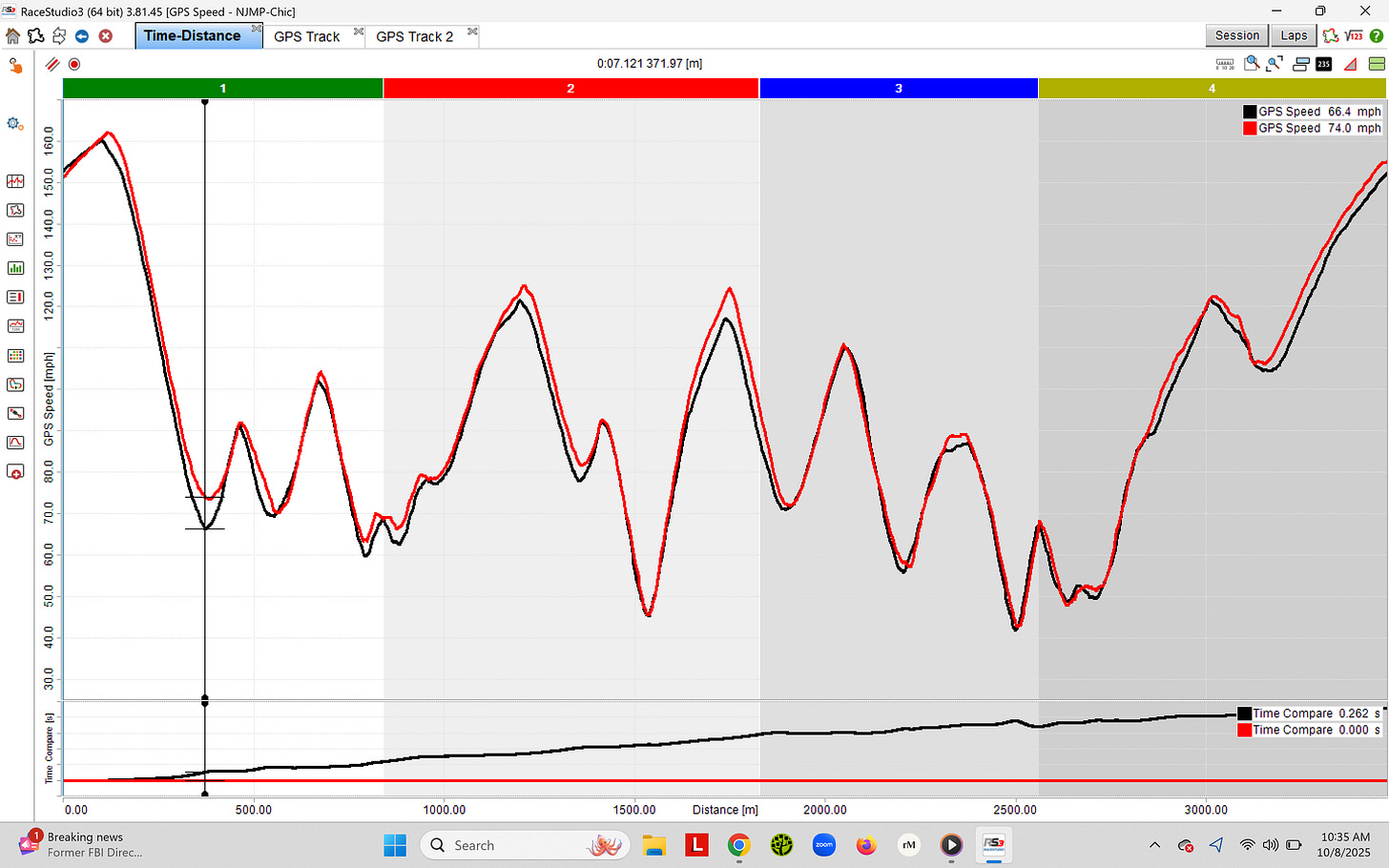
i was there when you were running at lightning i told you and showed the black s1000rr which i bought after watching your laps and review of the s1000rr . It was pleasure talking to you,somebody told me you were there at lighting and l foud you parked like 3 spots away from me
Hi Ken! I saw you at njmp last Oct 7th. I’m guy with grey RR with transmission trouble. Dealer working on it with warranty. I started subscribing to your Substack. Great hearing your words! Plus we have same bike! Thank you for that.
Question for ya! I’m considering changing gearing on my 2025RR. Adding two teeth in rear . To keep tire in same position do you know how much longer chain is needed? Or is the one tooth smaller up front good enough . You mentioned gearing in last video.